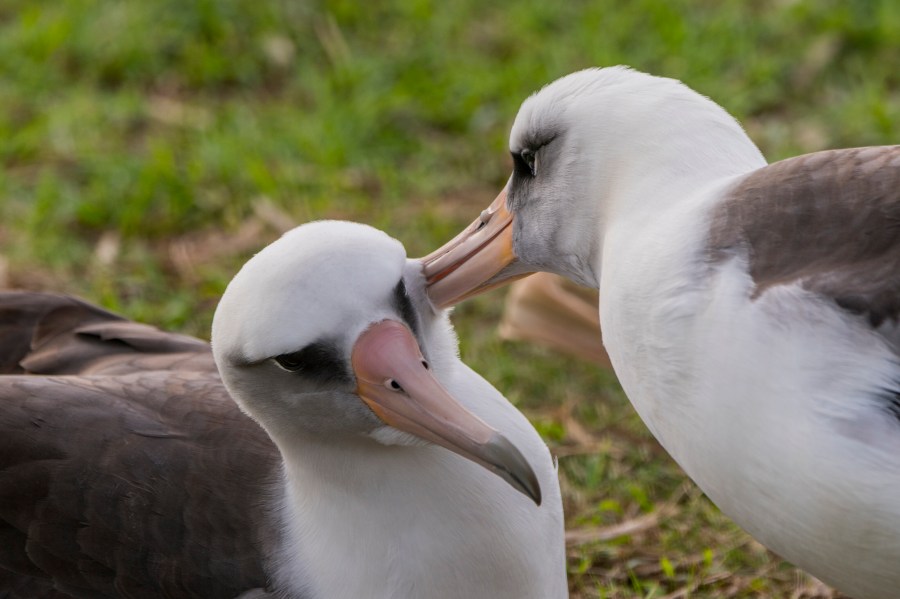HONOLULU (KHON2) — Hawaiʻi is home to the most diverse and unique ecosystem on the planet.
As we scurry through the streets for meetings, work, appointments, school or shopping, the birds of our islands are busy foraging and migrating.
So, KHON2.com decided to see what birds would be migrating to and from the islands, with particular interest in those migrating this summer.
Migratory birds that come to Hawaiʻi
Hawaiʻi, with its isolated location in the Pacific Ocean, serves as a crucial stopover or destination for various migratory bird species.
These birds, traveling thousands of miles across the ocean, utilize the Hawaiian Islands for resting, breeding, or wintering. Here are some of the notable migratory birds that visit Hawaiʻi:
Pacific Golden-Plover (Kōlea): One of the most famous migratory birds in Hawaiʻi, the Pacific Golden-Plover flies from Alaska to Hawaiʻi every year. These birds are highly regarded and warmly welcomed by residents. They typically arrive in August and stay until late April or early May, feeding on insects and other invertebrates to build energy for their return journey.
Wandering Tattler (‘Ulili): Recognizable by its loud, piercing call, the Wandering Tattler migrates to Hawaiʻi from the coasts of Alaska and the Pacific Northwest. It is commonly found along Hawaiʻi’s rocky shorelines from late summer to early spring.
Bristle-thighed Curlew: This bird undertakes a remarkable non-stop journey from Alaska to various Pacific islands, including Hawaiʻi. It is notable for its long, curved bill and spends the non-breeding season in Hawaiʻi, where it can be seen foraging on mudflats and coastal areas.
Ruddy Turnstone (‘Akekeke): Another visitor from the Arctic, the Ruddy Turnstone can be spotted along Hawaiʻi’s shores, where it feeds on insects, crustaceans, and other small invertebrates. Its distinctive patterned plumage makes it easily identifiable.
Sooty Shearwater: This seabird migrates incredibly long distances, from breeding grounds in New Zealand and Chile to feeding areas as far away as the North Pacific. Hawaiʻi serves as a mid-migration feeding ground where the birds replenish their energy reserves.
Laysan Albatross: While primarily nesting in the Northwestern Hawaiian Islands, some Laysan Albatrosses also nest on the main Hawaiian Islands. They spend much of their life flying over the ocean, only coming to land to breed and rear their young.
These migratory birds play essential roles in Hawaiʻi’s ecosystems, serving as indicators of environmental health and connecting the island’s natural heritage to distant parts of the Pacific and beyond.
The presence of these birds highlights the importance of conservation efforts to maintain the habitats and food sources they rely on during their stay.
Migratory birds that leave Hawaiʻi
While Hawaiʻi is a key destination for many migratory bird species, it is also a departure point for others that breed in the islands but spend other parts of the year elsewhere.
These species typically breed in Hawaiʻi during the spring and summer and then migrate to different feeding grounds in the winter. Here are some notable examples of birds that leave Hawaiʻi to spend part of the year elsewhere:
Hawaiian Petrels (‘Ua‘u): These seabirds are endemic to Hawaiʻi and known for their elusive nature. They breed in the high elevation areas of the Hawaiian Islands and spend the rest of the year at sea, dispersing across the North Pacific. They are particularly known for their nocturnal habits on land to avoid predators.
Newell’s Shearwaters (‘A‘o): Another endemic species, Newell’s Shearwaters breed in burrows on the mountainous islands of Kauai and Maui. After the breeding season, they migrate to the central Pacific Ocean, where they remain until the next breeding season. Their migrations are risky, as they are vulnerable to light attraction, leading to fallout where fledglings become disoriented by city lights.
Laysan Albatross: While the Laysan Albatrosses are more noted for coming to Hawaiʻi to breed, after the breeding season, the adults and fledglings leave Hawaiʻi and spend much of their time in the North Pacific, ranging from Japan to the Bering Sea and along the coasts of North America.
Band-rumped Storm Petrels (‘Ake‘ake): These birds breed in the Hawaiian Islands and other parts of the tropical Pacific but spend a significant part of the year out at sea. They are unique in having a possible “double breeding season” which influences their migratory patterns, with movements largely dictated by oceanic conditions.
Christmas Shearwaters: Named after Christmas Island where they also breed, these birds are found in the Northwestern Hawaiian Islands during their breeding season and migrate across the central Pacific for the rest of the year.
These migratory patterns are crucial for the survival of these species, allowing them to exploit different ecological niches throughout the year. However, these migrations also expose them to various threats, including predation by invasive species, habitat loss, and the challenges posed by climate change affecting their oceanic feeding grounds.
Conservation efforts in Hawaiʻi aim to protect these birds’ breeding sites and support their safe migration.
